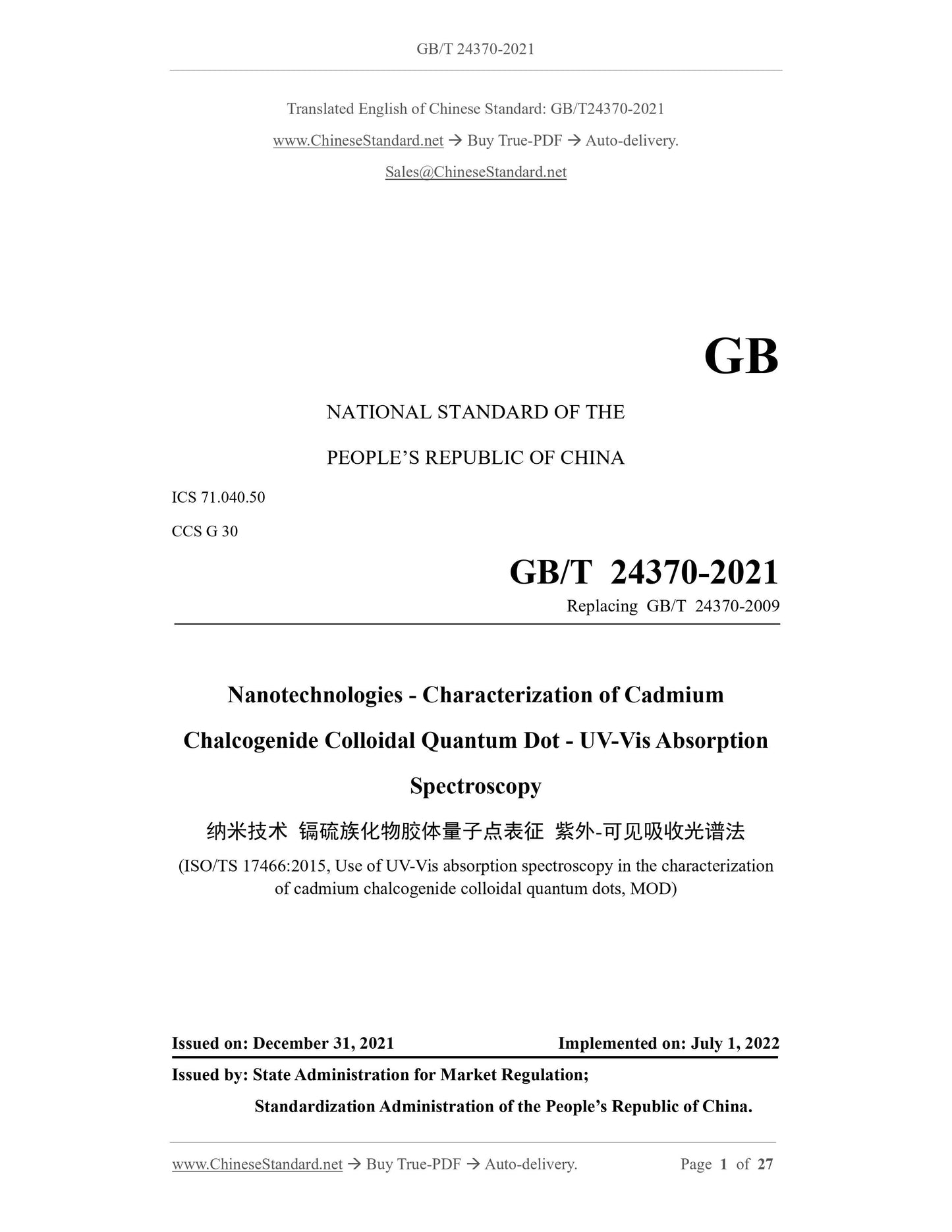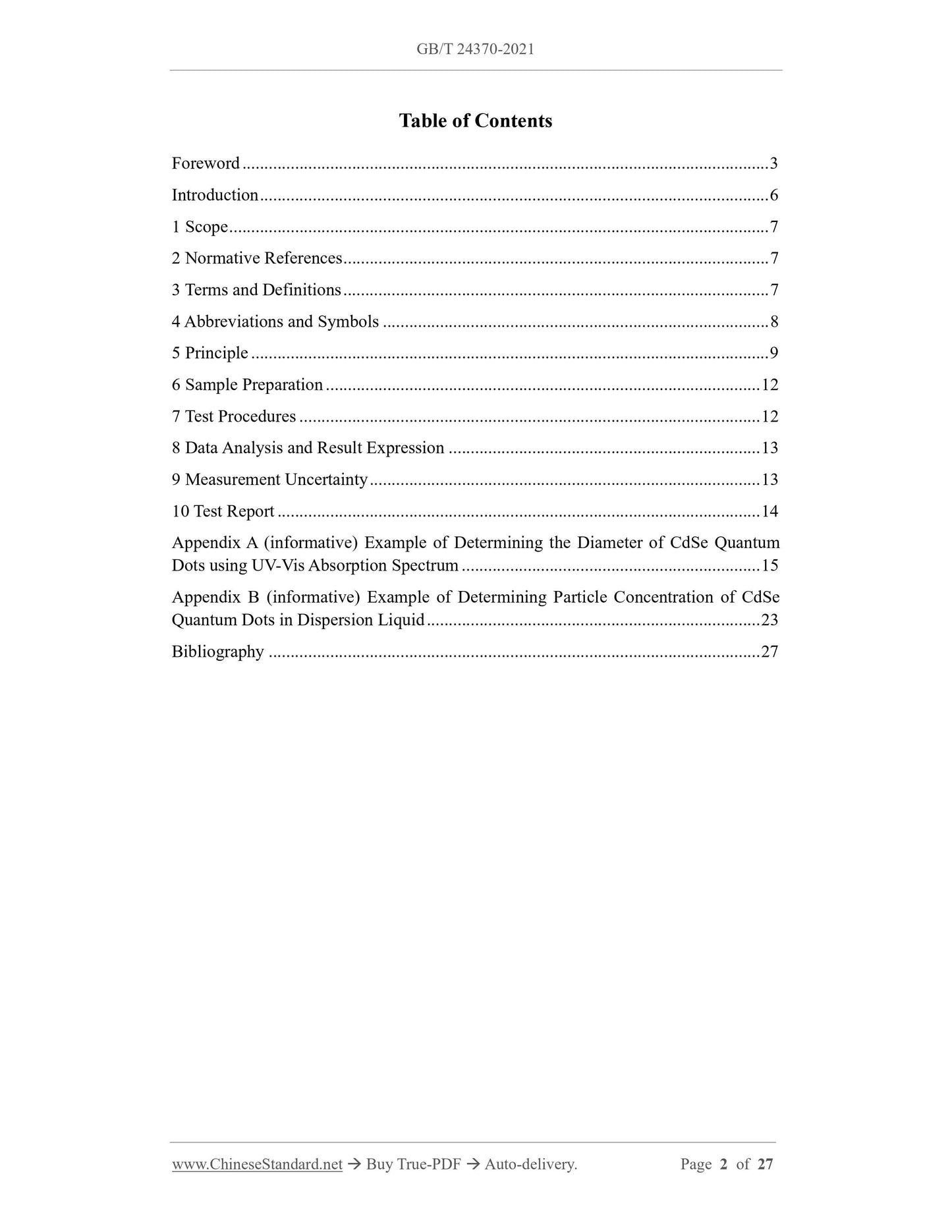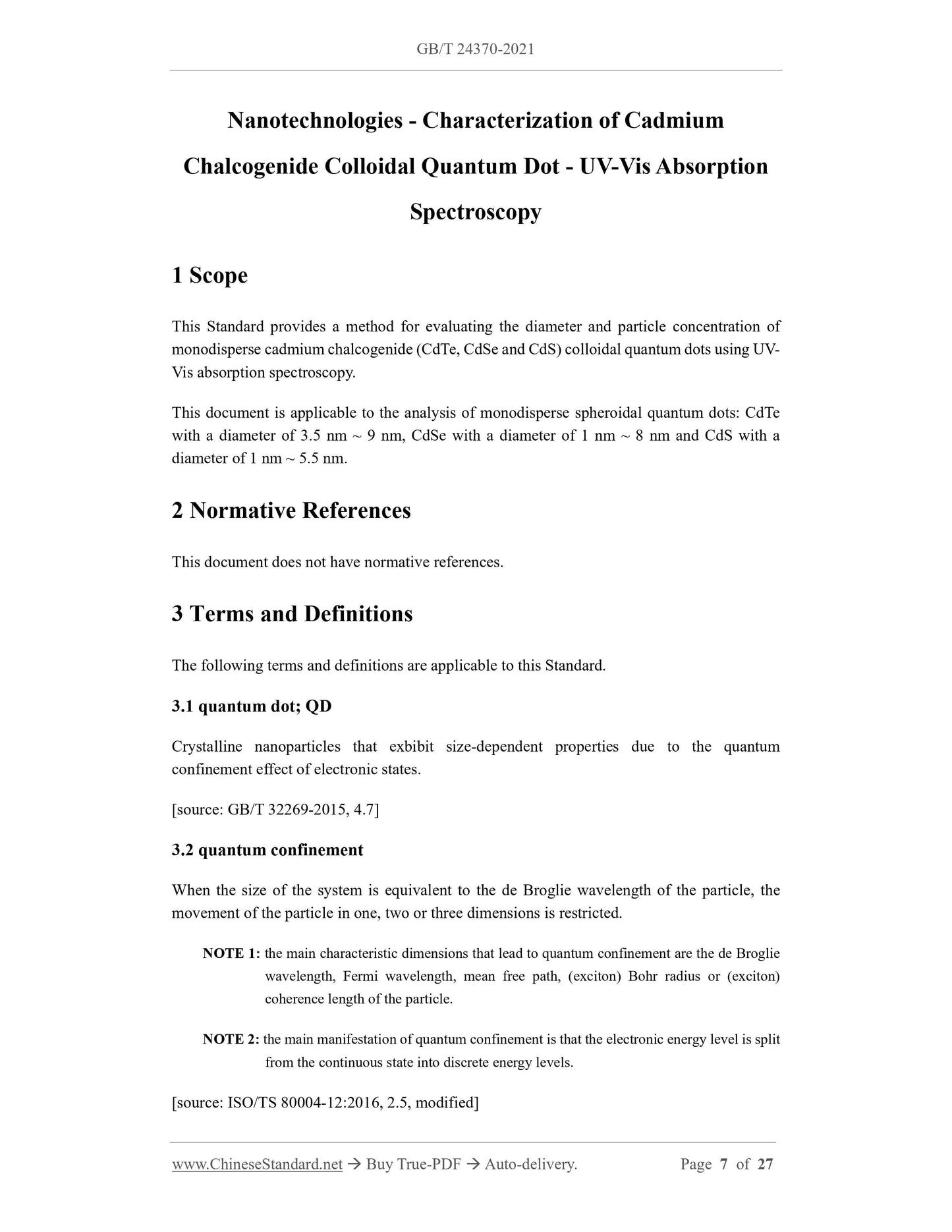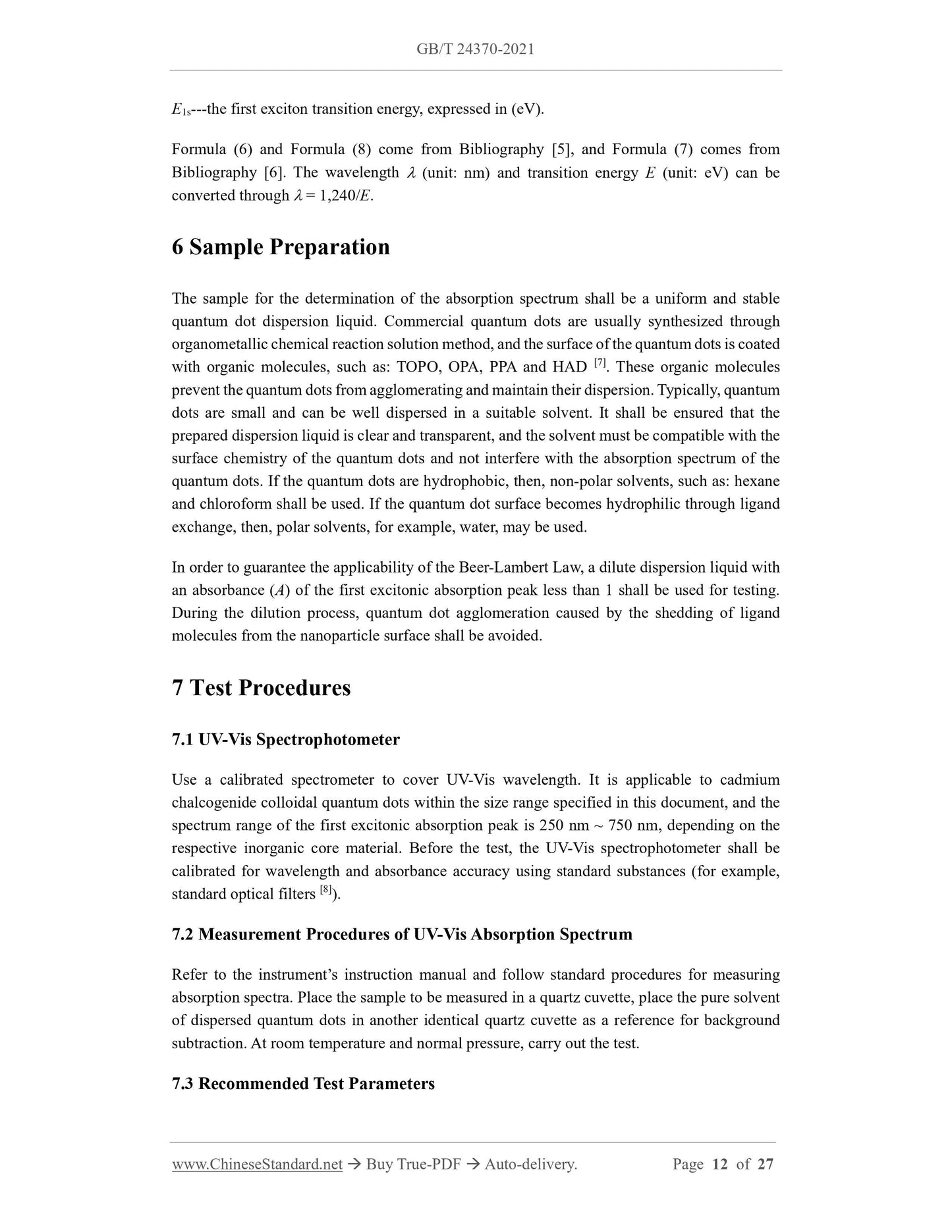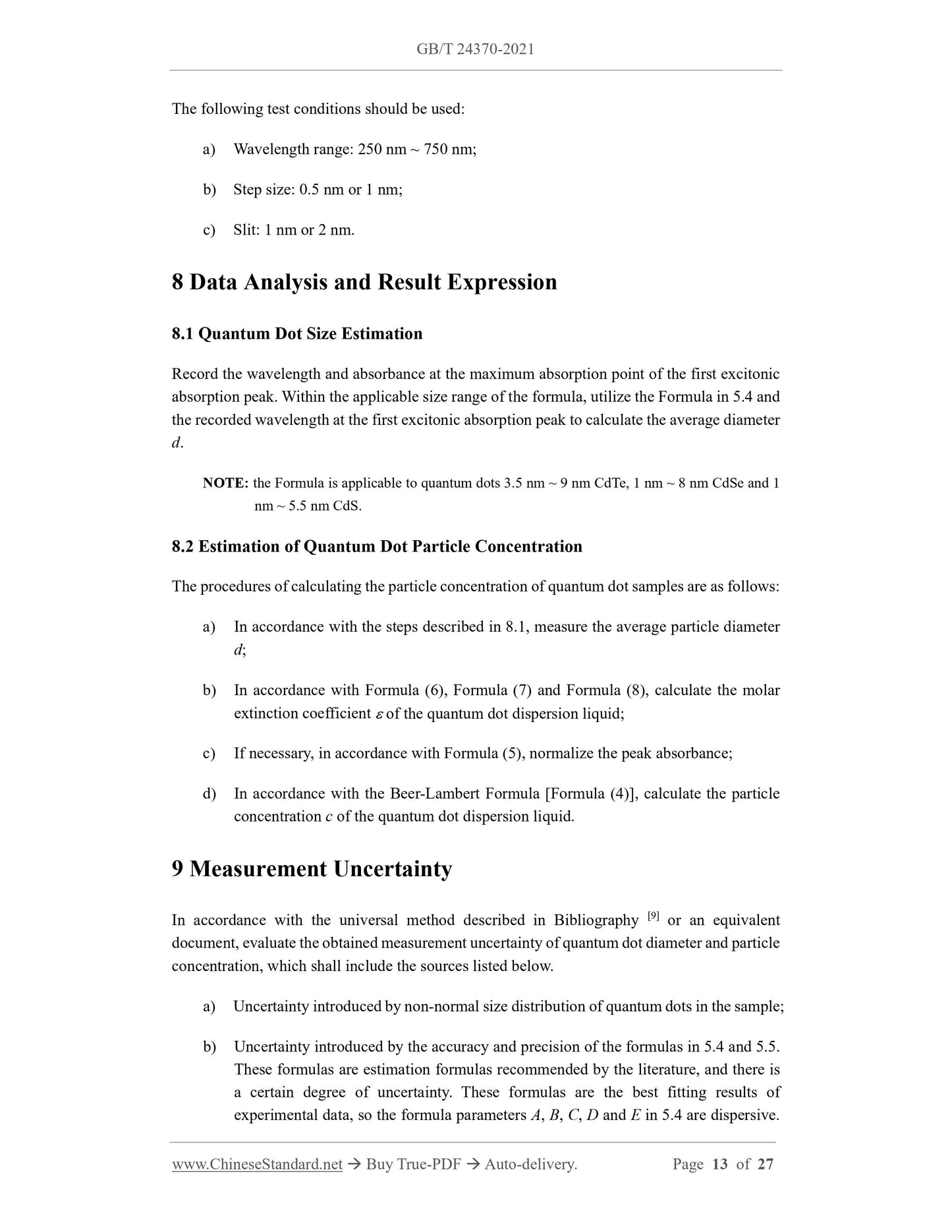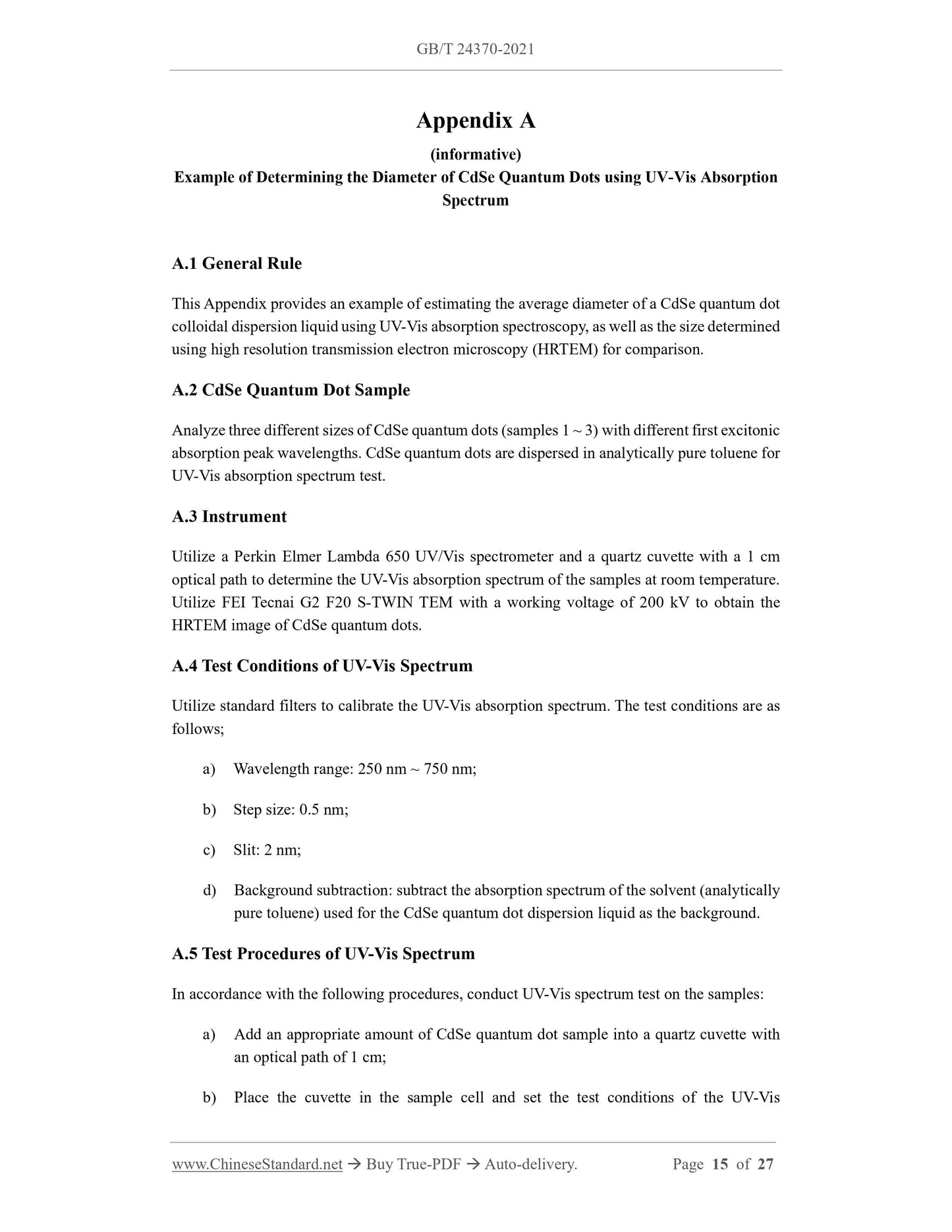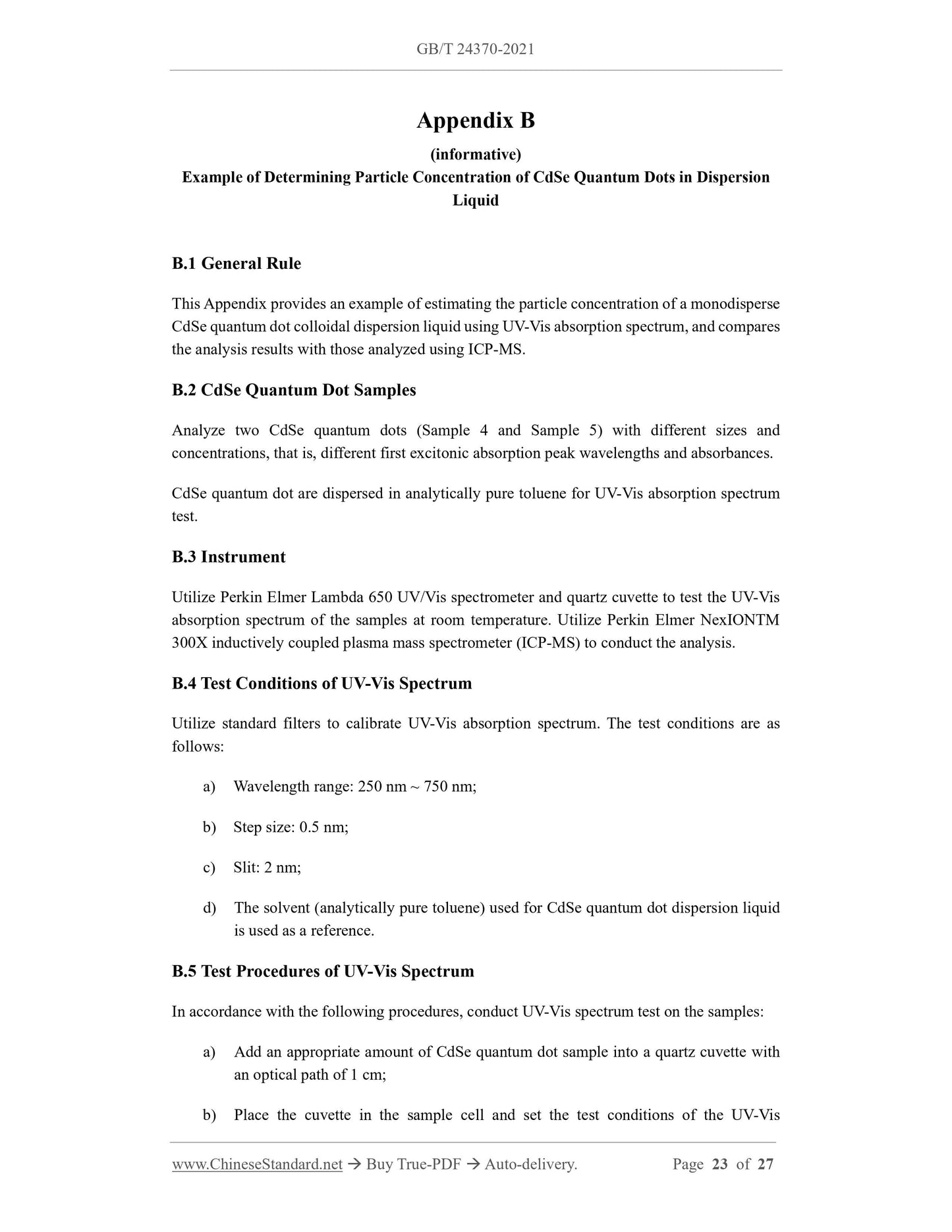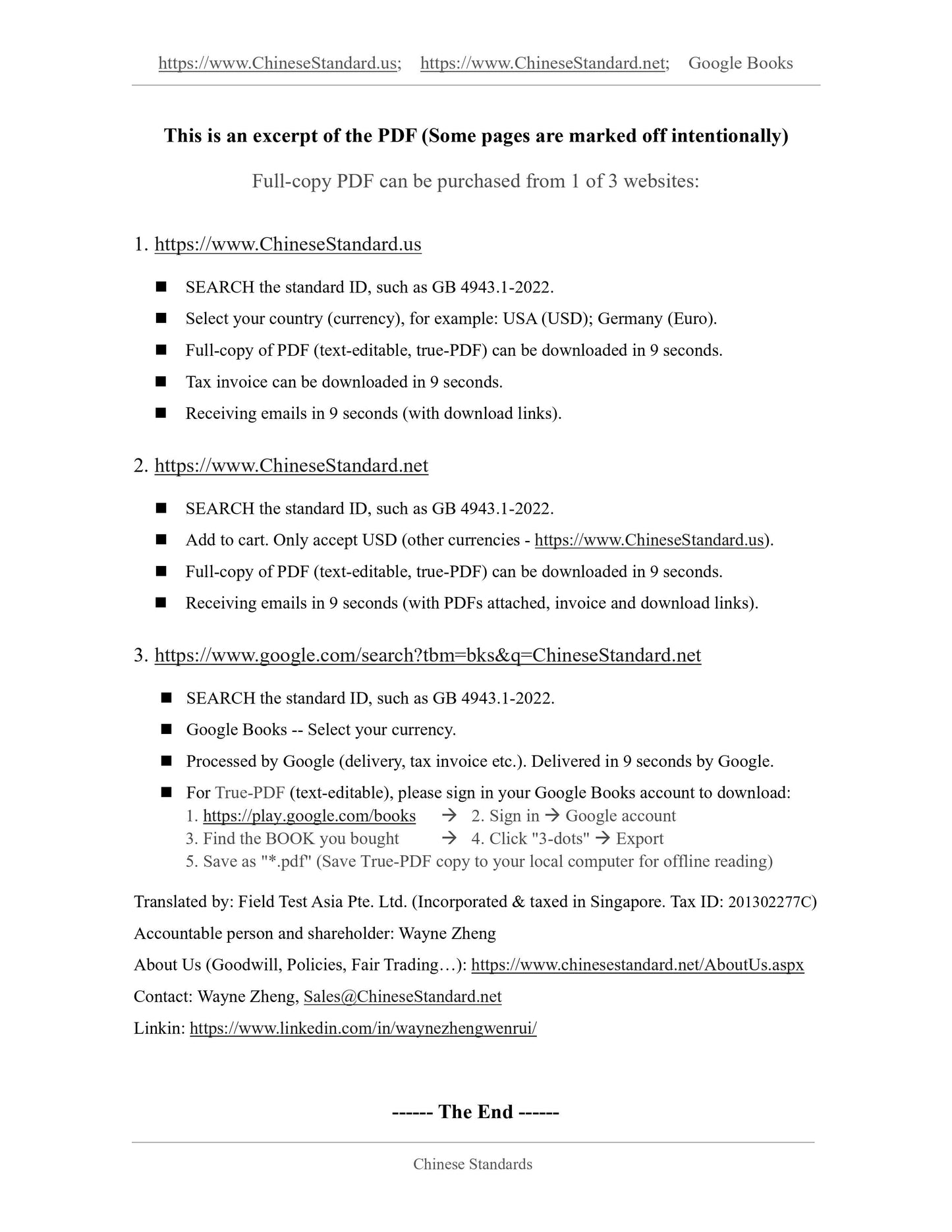1
/
of
10
www.ChineseStandard.us -- Field Test Asia Pte. Ltd.
GB/T 24370-2021 English PDF (GB/T24370-2021)
GB/T 24370-2021 English PDF (GB/T24370-2021)
Regular price
$325.00
Regular price
Sale price
$325.00
Unit price
/
per
Shipping calculated at checkout.
Couldn't load pickup availability
GB/T 24370-2021: Nanotechnologies - Characterization of cadmium chalcogenide colloidal quantum dot - UV-Vis absorption spectroscopy
Delivery: 9 seconds. Download (and Email) true-PDF + Invoice.Get Quotation: Click GB/T 24370-2021 (Self-service in 1-minute)
Newer / historical versions: GB/T 24370-2021
Preview True-PDF
Scope
This Standard provides a method for evaluating the diameter and particle concentration ofmonodisperse cadmium chalcogenide (CdTe, CdSe and CdS) colloidal quantum dots using UV-
Vis absorption spectroscopy.
Basic Data
| Standard ID | GB/T 24370-2021 (GB/T24370-2021) |
| Description (Translated English) | Nanotechnologies - Characterization of cadmium chalcogenide colloidal quantum dot - UV-Vis absorption spectroscopy |
| Sector / Industry | National Standard (Recommended) |
| Classification of Chinese Standard | G30 |
| Word Count Estimation | 22,251 |
| Issuing agency(ies) | State Administration for Market Regulation, China National Standardization Administration |
Share
